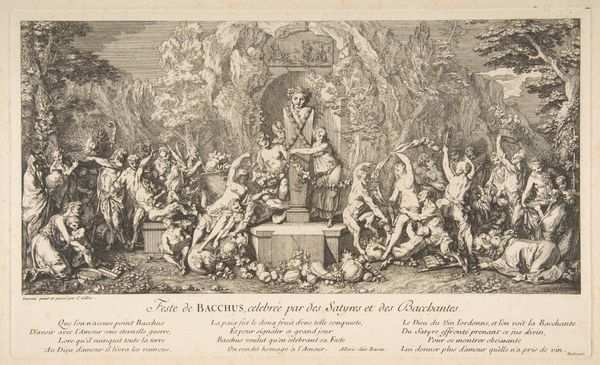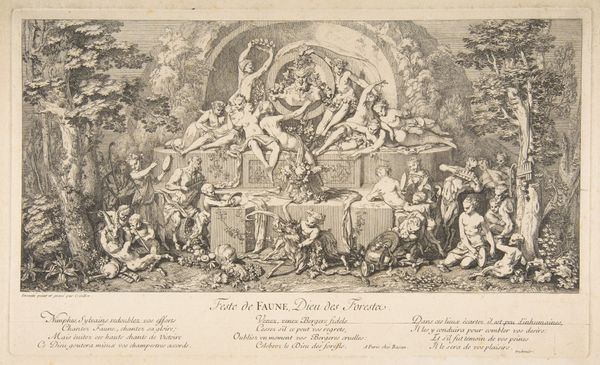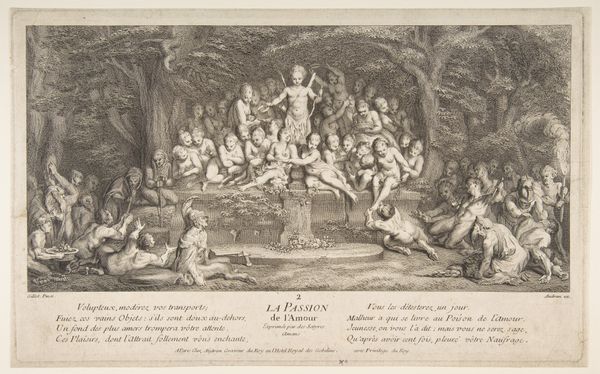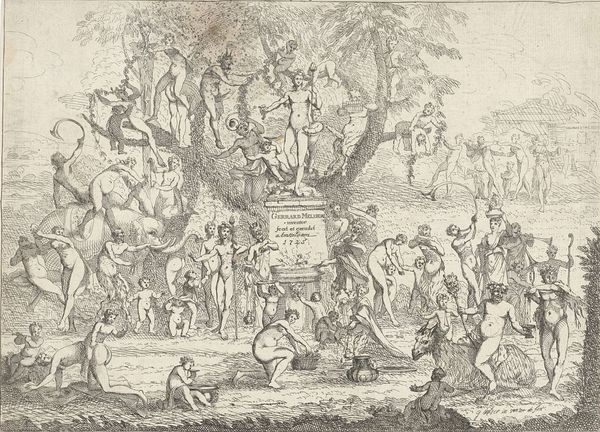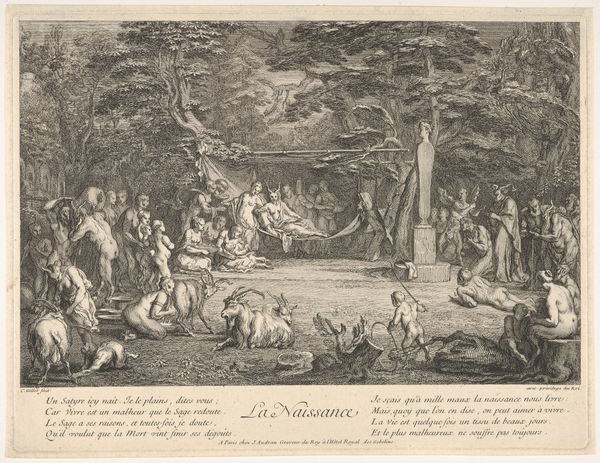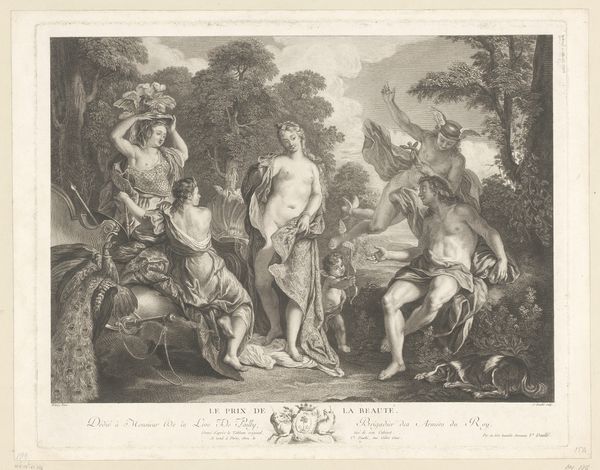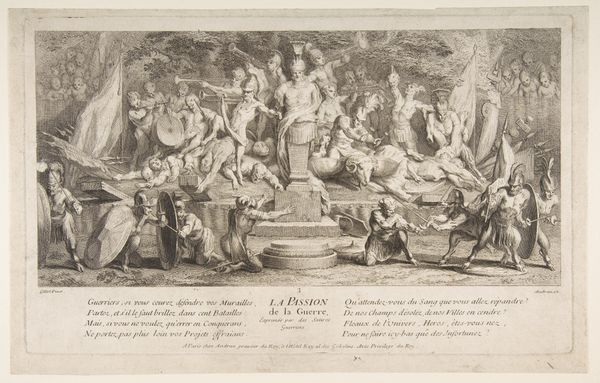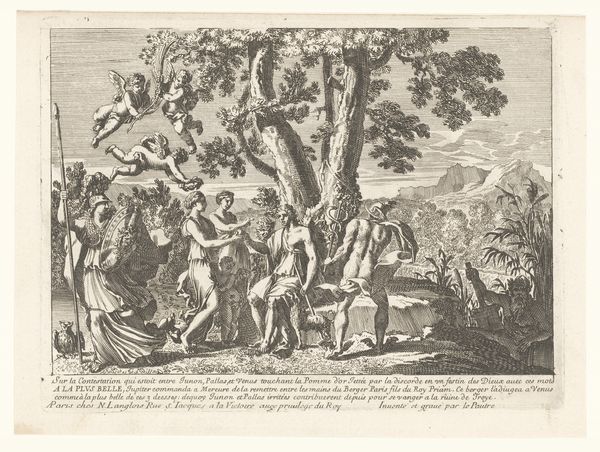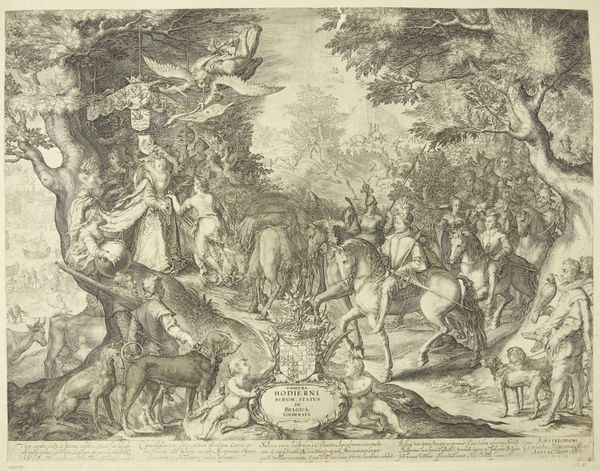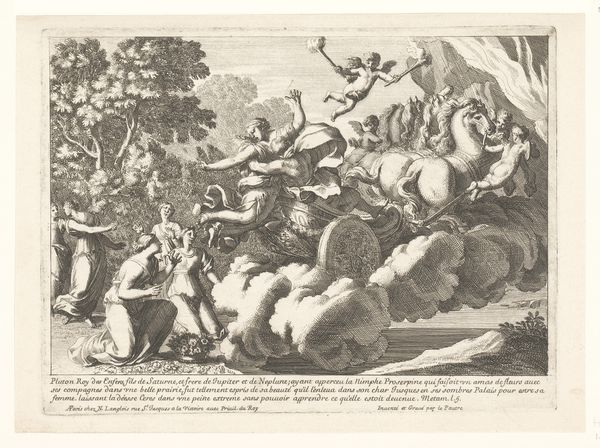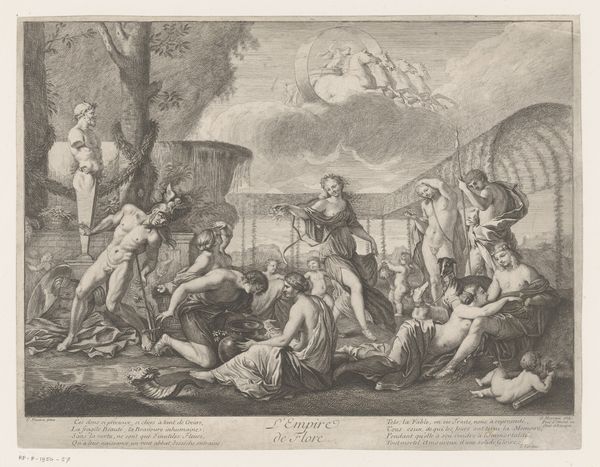
drawing, print, engraving
#
drawing
#
baroque
# print
#
figuration
#
female-nude
#
line
#
genre-painting
#
history-painting
#
nude
#
engraving
#
male-nude
Dimensions: sheet: 11 x 16 5/8 in. (28 x 42.2 cm) image: 9 3/4 x 15 1/2 in. (24.8 x 39.4 cm)
Copyright: Public Domain
Editor: This is "Feast of Pan," an engraving by Claude Gillot, made sometime between 1685 and 1722. The scene is so busy! There are so many figures packed together; you can almost feel the energy. How would you interpret this work, especially thinking about its creation as a print? Curator: Well, immediately, I’m drawn to the means of its production. As an engraving, this wasn't some spontaneous sketch; it was a deliberate, reproducible image. What impact did this reproductive capacity have? The work, not an oil painting or a sculpture, democratizes a "high art" subject by transforming it into a relatively inexpensive and widely accessible print. This raises fascinating questions about how classical themes like the Feast of Pan were consumed by different social classes in the 18th century. Editor: That’s an interesting point. It being an engraving meant more people had access. Did that affect the artist’s approach, do you think? Curator: Absolutely. Consider the level of detail. Gillot had to meticulously carve each line into the plate, requiring precision but also allowing for minute details that create the frenzied atmosphere. Moreover, an engraving encourages dissemination. I think about print workshops of the era, their social structure and the skill necessary. Editor: So you’re saying the material process is inseparable from the art’s social function? Curator: Precisely. The act of creating and distributing the print contributes to our understanding of how knowledge, and, by extension, culture, are propagated and even transformed within a society. Also think of how printmaking may have challenged then the role and status of "the artist". It might seem more commercial today but back then perhaps not. Editor: I never really thought about engravings in that way. So much labour involved for distribution. I’ll have to keep that in mind when I look at art. Curator: Exactly. Focusing on materials, labor, and consumption opens up many interesting points of interpretation and really makes art history relevant and human.
Comments
No comments
Be the first to comment and join the conversation on the ultimate creative platform.
